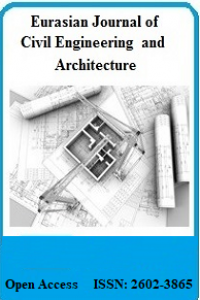Evaluation of the Utilization of Smartphone Applications in Active Probe Vehicle Traffic Data Collection
Evaluation of the Utilization of Smartphone Applications in Active Probe Vehicle Traffic Data Collection
Travel Time, Delay, Probe Vehicle Data Smartphone Applications, Traffic Data,
___
- Antoniou, C., Balakrishna, R., & Koutsopoulos, H. N. (2011). A Synthesis of emerging data collection technologies and their impact on traffic management applications. European Transport Research Review, 3(3), 139–148. http://doi.org/10.1007/s12544-011-0058-1
- Choi, K., & Chung, Y. (2002). A Data Fusion Algorithm for Estimating Link Travel Time. Journal of Intelligent Transportation Systems, 7(3–4), 235–260. http://doi.org/10.1080/714040818
- Djuknic, G. M., & Richton, R. E. (2001). Geolocation and assisted GPS. Computers, 34(2), 123–125. http://doi.org/10.1109/2.901174
- Faghri, A., & Hamad, K. (2002). Application of GPS in Traffic Management Systems. GPS Solutions, 5(3), 52–60. http://doi.org/10.1007/PL00012899
- Faouzi, N. E. El, & Klein, L. A. (2016). Data Fusion for ITS: Techniques and Research Needs. In Transportation Research Procedia (Vol. 15, pp. 495–512). Elsevier B.V. http://doi.org/10.1016/j.trpro.2016.06.042
- Faouzi, N. E. El, Leung, H., & Kurian, A. (2011). Data fusion in intelligent transportation systems: Progress and challenges - A survey. Information Fusion, 12(1), 4–10. http://doi.org/10.1016/j.inffus.2010.06.001
- Kaplan, E. D., & Hegarty, C. J. (2006). Understanding GPS: Principles and Applications (2nd ed.). Norwood, MA: Artech House Inc.
- Leduc, G. (2008). Road Traffic Data: Collection Methods and Applications. JRC Technical Notes (Vol. JRC 47967). Luxembourg. Retrieved from http://ftp.jrc.es/EURdoc/EURdoc/JRC47967.TN.pdf
- Trimble Store. (2018). Retrieved March 3, 2018, from https://store.trimble.com/OA_HTML/ibeCCtdMinisites.jsp?language=US
- Turner, S. M. (1996). Advanced techniques for travel time data collection. Transportation Research Record: Journal of the Transportation Research Board, 1551, 51–58. http://doi.org/10.1109/VNIS.1995.518816
- Turner, S. M., Eisele, W. L., Benz, R. J., & Douglas, J. (1998). Travel Time Data Collection Handbook.
- Başlangıç: 2017
- Yayıncı: Serkan ŞAHİNKAYA
Geotechnical Characterization of Alluvial Soil in Çiğli - Balatçık Region
Büşra SEMERCİ, İnci DEVELİOGLU, Hasan Fırat PULAT
The Future of 3D Printing Technology in the Construction Industry: a Systematic Literature Review
Identifying the Advantages of BIM in Structural Design
Nonlinear Site Response Analysis for the Izmir Region: A Case Study
Ayşe EDİNÇLİLER, Murat ÇALIKOĞLU
Abdulkadir ÖZDEN, Ardeshir FAGHRİ
Nonlinear and Equivalent Linear Site Response Analysis for the Bodrum Region
Ayşe EDİNÇLİLER, Gözde SEZGİN TUNCAY
Effects of Dimensions of Tire Waste Cushion on Seismic Performance of Retaining Wall
Ayşe EDİNÇLİLER, Yasin Sait TOKSOY
Performance Characteristics of International Joint Ventures in Construction
